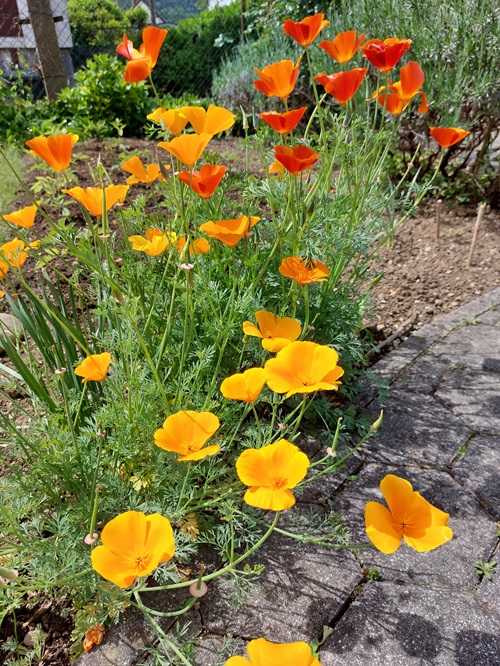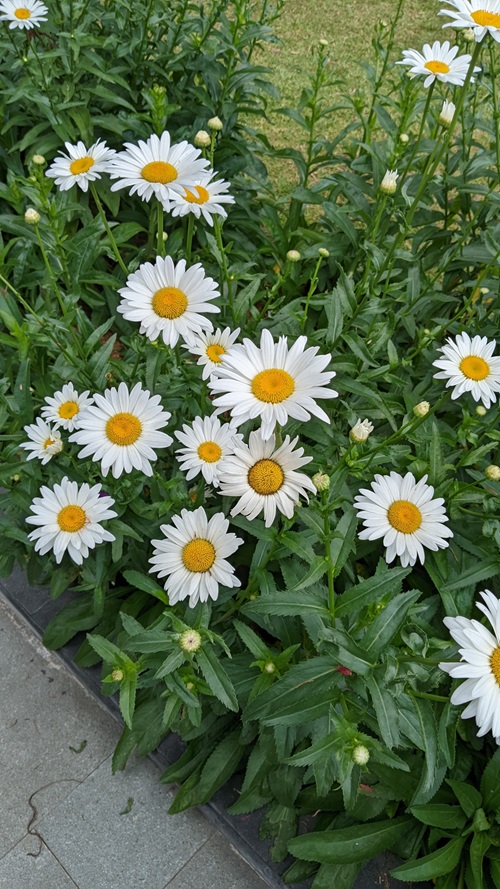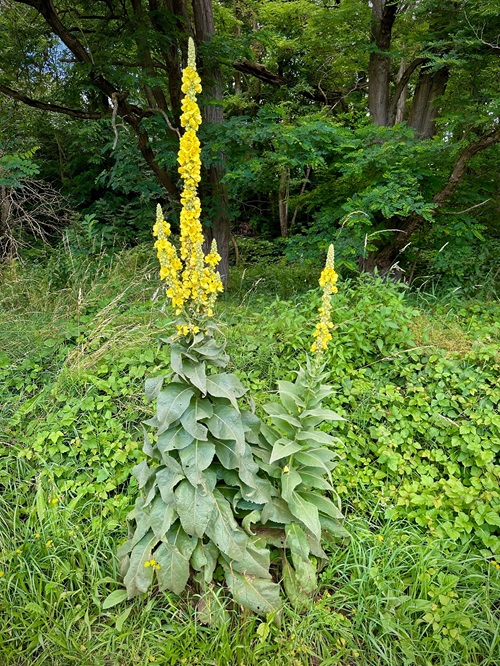As summer fades, pick out the Best Flowers to Plant in September to keep your garden bustling with blooms through fall, winter, and spring!
Perhaps your lush summer blossoms have begun wilting, and you dread a barren garden as winter approaches! However, with our list of the best flowers to plant in September, you’ll have a garden teeming with deep, warm blooms—some as early as fall and some through spring!
Why Plant in September?
This month marks summer’s end and the onset of fall. It provides a much-needed respite from the sweltering heat and is cool and moist enough for certain young plants and seeds to settle and develop before winter.
While some bloom in autumn itself, bearing the prettiest flowers that pop against the changing fall foliage, others need this period of chill to be ready for spring flowering after winter’s last frost.
Best Flowers To Plant In September
1. Zinnia
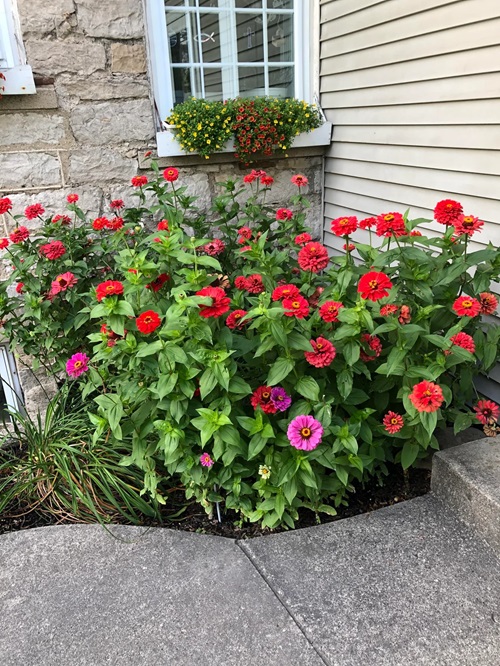
Botanical Name: Zinnia elegans
USDA zones: 2-11
Let’s kickstart this list with zinnias as a priority! If you haven’t already planted them, do so now without further delay! Thriving in hot weather, zinnias sprout easily from seeds and grow well in fall’s dryer conditions.
Why wait till spring when you can get beautiful blooms, even in winter? With Zinnias, you can enjoy beautiful winter blooms that attract pollinators like butterflies. These are quite fast-growing, blooming in just a month after sowing. So, start planting now!
2. Wild Pansy
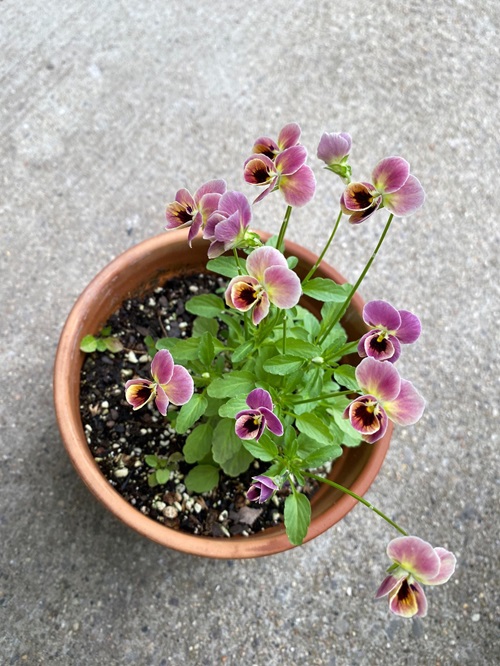
Botanical Name: Viola tricolor
USDA zones: 2-9
Also called Johnny jump ups, plant these delightful edible flowers in September to enjoy them in fall through spring and summer, especially in regions with mild winters. However, if you face harsh winters, they’ll simply go dormant and reappear in spring!
These flowering plants need well-draining, moist, fertile soil and full sun to thrive. They are short-lived, but freely reseed.
3. Peony
Botanical Name: Paeonia
USDA zones: 3-8
Peonies can give you an array of pretty pastels during springtime if you start planting them in late fall to early winter, as they need enough chill hours to root and establish themselves. These perennials take a few years to mature, but live for decades after.
They thrive in full sun to light shade in deep, well-draining, fertile soils.
4. Asters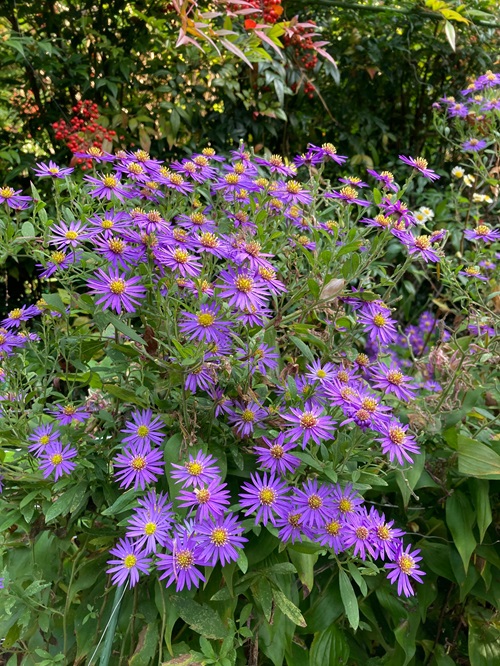
Botanical Name: Aster
USDA zone: 4-9
September brings cool weather—perfect for planting asters in pots for fall blooms! If planting in the ground, the best time is spring to summer, after the passing of frost, unless you live in a warm climate, where you can plant it in autumn. You can also try starting them from seeds indoors during fall.
Named after the Greek word for “star,” these daisy-like blooms need full to part sun, depending on the variety, and rich loamy or clay soils to thrive.
5. Dwarf Iris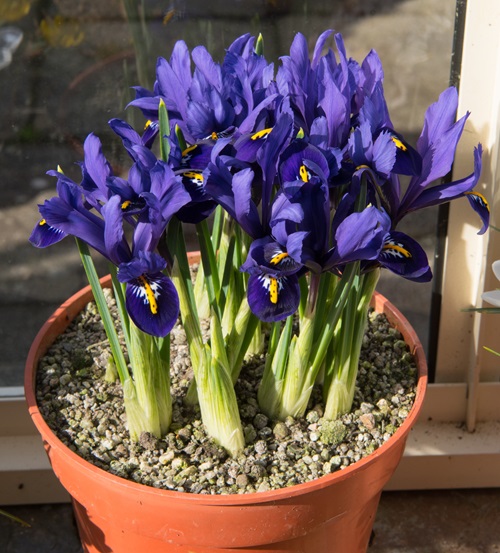
Botanical Name: Iris reticulata
USDA zones: 5-9
This month is perfect for planting Dwarf irises, so the first blooms you relish after winter are these purple-blue spectacles with striking yellow markings. You could also choose newer, more dynamic varieties like ‘George’ or ‘Natascha’ for pinkish-purple or blue petals, adding drama to pots or garden borders.
They thrive in full to partial sun and well-draining moist soil. Dividing them is the best way to expand them.
6. Cyclamens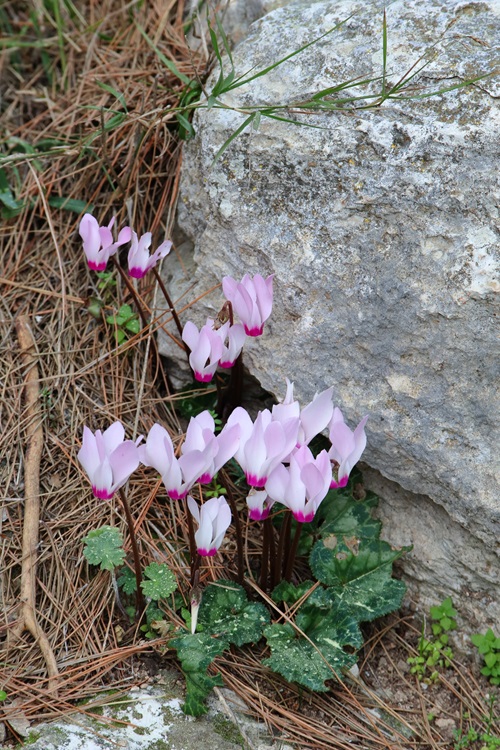
Botanical Name: Cyclamen spp.
USDA zones: 4-8
With jewel-like blooms in white, pink, red, magenta, and more, these self-seeders also have unique, textured foliage. While some varieties like Cyclamen coum are super cold-hardy, it has species like Cyclamen persicum that are hardy to the warmer climes of zones 9-11.
They grow well in rocky areas and prefer dry summers and cool, moist winters.
7. Poached Egg Plant

Botanical Name: Limnanthes douglasii
USDA zones: 4-8
Make your spring and summer gardens all the more cheerful and pollinator-friendly with easy-to-grow poached egg plants! Aptly named, they showcase white flowers with yellow centers, making for amazing ground cover and path-edging plants.
For the earliest spring blooms, sow the seeds in September, scattering them thinly over the finely raked soil and covering them lightly.
Pro tip: Poached egg plants can be great companion plants for fruit and vegetable trees as they attract insects that feed on nasty plant pests like aphids.
8. California Poppy
Botanical Name: Eschscholzia californica
USDA zones: 6-10
California’s state flower—these poppies come in various hues, such as red and yellow. However, the orange variant is the most common, with its glossy petals and soft fern-like leaves.
Sow the seeds lightly in September in sandy, well-draining soil and ensure lots of sun. As they start to flower, you will notice their furled petals open up to sunshine.
9. Mallow
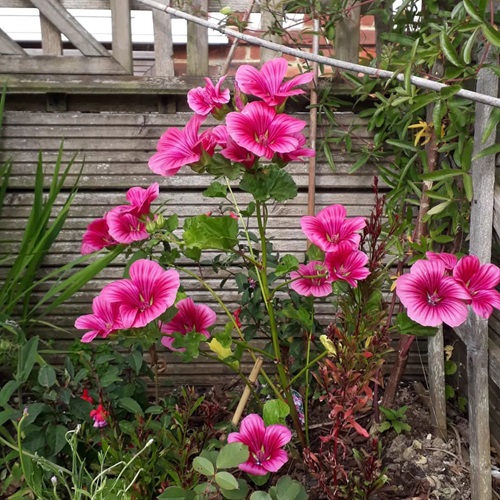
Botanical Name: Malope trifida
USDA zones: 5-10
Looking for an easy-maintenance plant with show-stopping flowers for your spring garden display? Well, you can’t go wrong with mallow! This hardy annual, growing about a meter in height, showcases abundant glossy purple-pink flowers with lime-green centers. As they bloom in early spring, you can even harvest them as cut flowers.
Pro tip: Sow two or three batches of seeds over six weeks for a prolonged flowering season.
10. Calendula
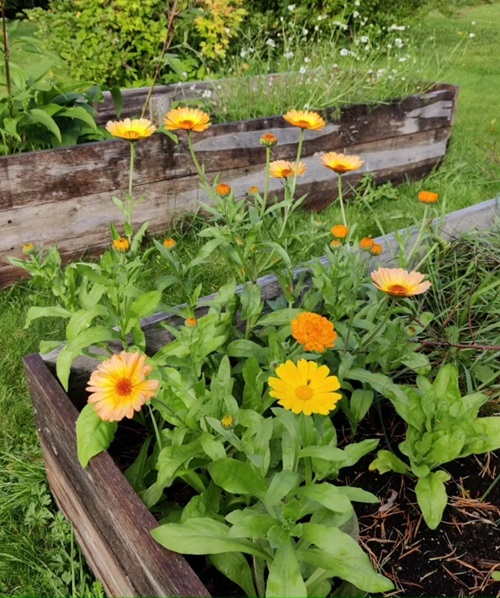
Botanical Name: Calendula officinalis
USDA zones: 2-11
Colloquially known as pot marigolds, these flowering plants are renowned for their edible and fragrant blooms in shades like yellow, orange, and gold. They are also a favorite of butterflies, bees, and even hoverflies, which feed on aphids and serve as natural pest control.
For late spring or summer blooms, plant them in September in well-draining, rich soil with a pH of 6-8.
11. Pincushion flower

Botanical Name: Scabiosa atropurpurea
USDA zones: 4-11
If you live in a warmer area with mild winters, you could choose the perennial ‘Fama’ series of pincushions to plant in your garden in September. Named so because their stamens look like tiny pinheads sunken into the velvety soft center of each flower, these are especially easy to grow.
Plus, they look gorgeous in shades like bluish-purple and pure white! They prefer rich, well-draining, alkaline soil and hate wet feet.
12. Blue Vervain
Botanical Name: Verbena hastata
USDA zones: 3-8
Though most vervain varieties are best planted in early spring after the last frost has passed, you can sow the blue vervain in September and let it overwinter. It’s a great option for attracting pollinators like butterflies and bees and is perfect for rain gardens and pond margins.
It needs full sunlight and well-draining, moderately rich soil to grow well.
13. Christmas Cactus
Botanical Name: Schlumbergera spp.
USDA zones: 10-12
The best part about the Christmas Cactus is that you can grow or propagate it indoors at any time. However, buying a new specimen and planting in September ensures beautiful red or pink blossoms by the holiday season!
Of course, to ensure flowering, you must provide it with temperatures of 55–59 F (12–15 C), regulate the light it gets, and ensure periods of darkness (around 13 hours). Here are things you can do urgently to ensure more blooms in winter.
14. Pink Trumpet Vine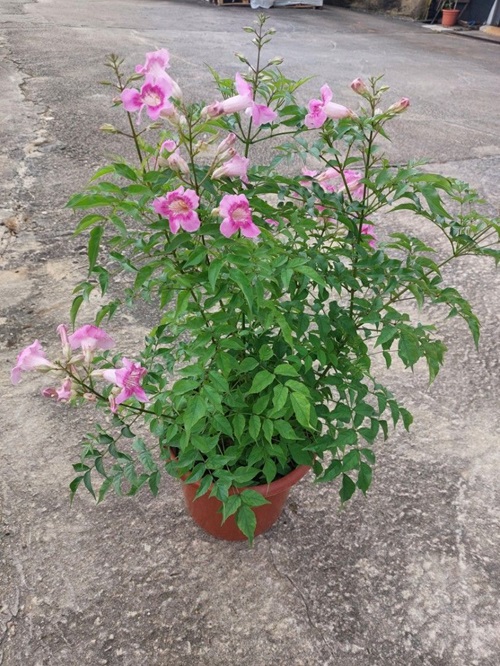
Botanical Name: Podranea ricasoliana
USDA zones: 9-11
When planting a pink trumpet vine in September, remember to provide adequate space for the roots to spread. Also, use trelises or other structures to provide support for the young plant to climb, which is also a great way to show off its trumpet-shaped pink flowers.
This rambling vine becomes drought-tolerant after a couple of years of regular watering when it grows. It blooms from spring to fall, pausing in summer.
15. Dutch Crocus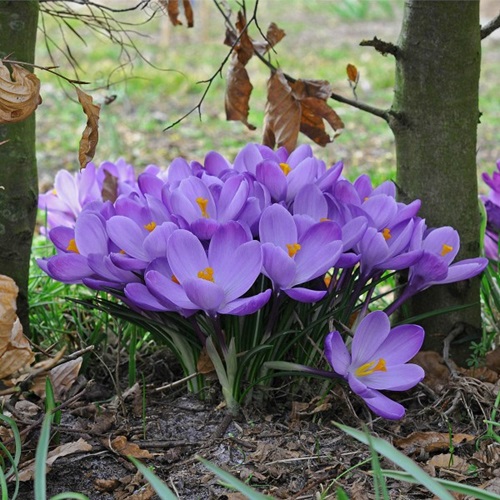
Botanical Name: Crocus vernus
USDA zones: 3-8
Crocuses are perennial, meaning they come back every spring, and they can be planted from early September to November. However, planting in late summer ensures a beautiful display of flowers in early spring!
Varieties like the ‘Grand Maitre’, which showcases goblet-shaped deep purple flowers, are great for attracting pollinators to your garden.
16. Chrysanthemums
Botanical Name: Chrysanthemum
USDA zones: 3-9
Now that vibrant mums are all the rage, they are an excellent choice to plant in September. You can plant them anytime during the month, but ensure it is at least six weeks before the year’s first frost.
They thrive in soil rich in organic matter and need full sun for about six hours daily and partial afternoon shade.
17. Mullein
Botanical Name: Verbascum thapsus
USDA zones: 3-9
Looking to add some height to your garden border? Mulleins are exactly what you need. With so many varieties, you could have clusters of silvery purple, gold, or yellow rising from the plant in spires.
Blooming in fall, this plant thrives in clay to sandy, well-draining soil. Cut back the flowered stems to extend the flowering season throughout summer.
Now that you have such a versatile selection to choose from, most of which will add to an amazing spring garden or summer display, don’t forget to tell us which flowers you’ll be planting this September via the comments below!


